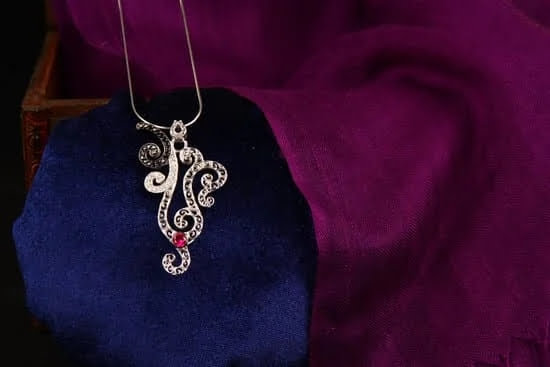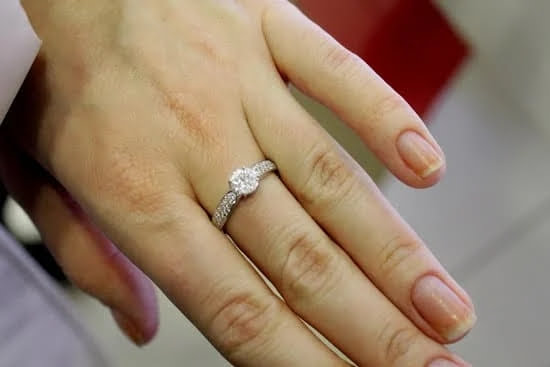How are raw gemstones and metals processed into jewelry? This fascinating question sparks curiosity about the enchanting transformation that occurs when these natural materials go through a series of intricate processes. From the unearthing of precious stones and metals to the final touches of hand-finishing, every step in the creation of exquisite jewelry is a testament to human craftsmanship and the alchemy that turns raw materials into something truly dazzling.
The journey begins with unveiling the raw gemstones and metals, where skilled artisans delve into the depths of Earth or sift through gravel beds in search of precious treasures. These unprocessed materials, in their crude state, hold immense potential for beauty, waiting to be shaped by human hands. In parallel, metals are extracted from ores found deep within the Earth, ready to be transformed into shining foundations for gemstones to rest upon.
Once unearthed and extracted, comes the lapidary artistry – a magical process where skilled craftsmen cut and shape gemstones into stunning facets. With precision tools and techniques passed down through generations, they unleash the inner beauty hidden within each stone. This art form enhances not only its aesthetic appeal, but also its brilliance as light dances across its meticulously crafted surfaces.
However, cutting alone is not enough to bring out the full potential of a gemstone. It requires polishing and smoothing to truly unlock its radiance. Through careful buffing and grinding procedures, lapidaries refine the surface of gemstones to achieve a lustrous finish that captures light in captivating ways. The secrets behind brilliance lie in these intricate processes that transform a humble rock into a captivating work of art.
In this article, we will embark on an expedition through each step in the journey from raw materials to dazzling jewelry pieces. We will delve into how gemstones are cut, shaped, polished, and set onto metal foundations. Furthermore, we will uncover the techniques used for bonding gemstones with metal as well as adding intricate detailing and design to the finished piece.
Lastly, we will explore the final touches of hand-finishing and quality control measures before packaging and dispatching the jewelry. Join us as we unravel the enchanting alchemy that turns raw gemstones and metals into exquisite jewelry pieces that sparkle with beauty.
The Journey Begins
The first step in the process of transforming raw gemstones and metals into exquisite jewelry is the unveiling of these materials. Raw gemstones are typically found in mines or obtained through mining activities. Similarly, metals used in jewelry making can come from various sources such as ore extraction.
When it comes to gemstones, they are often discovered in their natural forms, which may include rough crystals or rocks. In order to be used in jewelry, the gemstones need to be carefully extracted from their surroundings and prepared for further processing.
Metals, on the other hand, undergo a different process. They are usually obtained by mining ores that contain the desired metal. These ores then go through a series of extraction methods to separate the metal from other components. Once the metal has been extracted, it is purified and refined to remove impurities and obtain a high-quality material.
After obtaining both the raw gemstones and metals, they are further examined for quality and sorted based on their characteristics such as color, clarity, size, and shape. This initial sorting helps jewelers determine which pieces will work best together to create a harmonious design.
| Gemstone Extraction | Metal Production |
|---|---|
| Annual global gemstone production: $22 billion | World silver mine production: 24,000 metric tons |
| Largest producer of gemstones: China | Top gold-producing country: China (approx. 400 metric tons) |
| Types of commonly mined gemstones: diamonds, rubies, sapphires, emeralds | Most commonly produced metals: gold, silver, platinum, palladium |
The journey of transforming raw gemstones and metals into jewelry begins with the careful selection and extraction of these materials. By understanding the origin and characteristics of the raw materials, jewelers can better appreciate the artistic and intricate processes that follow in turning them into dazzling pieces of jewelry.
Lapidary Artistry
Lapidary artistry is a crucial step in the process of transforming raw gemstones into exquisite jewelry pieces. This section will explore the intricate techniques used to cut and shape gemstones into stunning facets that enhance their natural beauty.
The first step in lapidary artistry is determining the best way to cut the gemstone to maximize its potential. Lapidarists carefully evaluate each gemstone’s color, clarity, and natural features before planning the cuts. They take into account factors such as the gemstone’s size, shape, and desired end result. This meticulous planning ensures that the gemstone is utilized to its fullest potential.
Once a plan is established, lapidarists use a variety of tools and techniques to execute precise cuts on the gemstone. The most common cutting method is using diamond saws or blades. These tools make it possible for lapidarists to create clean, accurate cuts on even the hardest gemstones.
After cutting, lapidarists move on to shaping the gemstone into stunning facets. This involves using grinding and polishing tools with different levels of abrasiveness to create flat surfaces known as facets. Each facet must be carefully shaped and polished to ensure maximum brilliance and sparkle.
In addition to traditional faceting techniques, lapidarists also employ innovative cutting styles such as cabochons or freeform shapes. Cabochon cutting involves shaping a smooth domed surface on one side of the gemstone while leaving the other side flat. Freeform shapes allow lapidarists to create unique designs that showcase a gemstone’s individual character.
Overall, lapidary artistry is a skillful process that requires precision and creativity. The technique of cutting and shaping gems into stunning facets plays a vital role in unlocking their true beauty, making them ready for further stages of jewelry production.
| Lapidary Artistry Techniques | Description |
|---|---|
| Diamond Sawing | Using diamond saws or blades to make precise cuts on gemstones |
| Grinding and Polishing | Using various polishing tools to shape and smooth the gemstone’s facets |
| Cabochon Cut | Creating a domed surface on one side of the gemstone while leaving the other side flat |
| Freeform Cutting | Creating unique shapes that highlight the gemstone’s individual character |
The Secret Behind Brilliance
Gemstones, in their raw form, are unremarkable and lack the radiant glow for which they are coveted. The secret behind their brilliance lies in the process of polishing and smoothing, where the rough exterior is transformed into a dazzling display of luster. This stage of gemstone processing is crucial in enhancing both their aesthetic appeal and overall value.
The Art of Polishing
Polishing gemstones involves removing any imperfections or impurities from their surface, resulting in a smooth and reflective finish. The process begins with a lapidary artist selecting the appropriate materials for polishing, such as diamond powders or abrasives. These materials are then applied to a rotating wheel made of softer material like felt or leather.
The gemstone is carefully held against the rotating wheel, allowing the abrasive material to gently grind away any irregularities and achieve a polished surface. Water is often used during the process to cool down the stone and prevent overheating. The lapidary artist must possess skilled precision and patience to ensure that every facet of the gem receives equal attention, resulting in an exquisite shine.
Smoothing Out Imperfections
After polishing, gems may still have microscopic imperfections that can affect their clarity and brilliance. To address this issue, an additional step called smoothing is undertaken. Smoothing involves further refining the surface of the gemstone by using finer abrasives or powder compounds.
During this stage, lapidary artists use tools such as sandpapers, grinding wheels, or rotary instruments with diamond pastes to meticulously remove any remaining scratches or blemishes on the gemstone’s surface. The goal is to create a flawless appearance that allows light to pass through without obstruction, resulting in enhanced brilliance.
Enhancing Luster
Once the gemstone has been polished and smoothed to perfection, it undergoes one final step before it truly sparkles – buffing. Buffing involves using a soft cloth or brush to gently rub the gemstone, applying a specialized compound that adds luster and further enhances its shine.
This final touch brings out the full potential of the gemstone’s color and clarity, giving it a brilliant and reflective quality that will captivate anyone who lays eyes upon it. The expert skill of lapidary artists ensures that every gemstone shines brilliantly, ensuring maximum allure and value in the final piece of jewelry.
Metal Manipulation
In the process of transforming raw gemstones and metals into exquisite jewelry, metal manipulation holds a crucial role. This section will delve into the fascinating journey of metals, from ore extraction to precious metal alloying. Understanding this process provides insight into the craftsmanship and meticulous attention to detail involved in creating stunning pieces of jewelry.
Ore Extraction: Unearthing the Hidden Treasure
Before metals can be utilized in jewelry making, they must first be extracted from their natural sources. Depending on the type of metal, various mining methods are employed. Open-pit mining is commonly used for materials such as gold and copper, where minerals are unearthed from open-air quarries.
For deeper deposits or metals like silver, underground mining techniques are employed. Once the ore is extracted, it undergoes a series of crushing and grinding processes to break down large rocks into smaller particles.
Refining and Purification: Transforming Raw Ore Into Metal
Raw ore typically contains impurities that need to be removed before it can be used in jewelry making. The refining process involves heating the ore at high temperatures to separate impurities from the desired metal. This is achieved through various methods such as smelting, which uses extreme heat and chemical reactions to eliminate impurities and achieve higher purity levels. Following this refining process, further purification may be necessary using electrolysis or other techniques to achieve the desired level of purity.
Precious Metal Alloying: Finding the Perfect Blend
Alloying is a crucial step in manipulating metals for jewelry production. Pure metals, especially those used for fine jewelry such as gold or silver, are often too soft to withstand everyday wear and tear. By combining them with other metals in precise proportions, jewelers create alloys that possess enhanced durability and desirable characteristics like color or hardness.
For example, gold is commonly alloyed with metals such as copper or silver to create different shades and strengthen the material. The artistry of metal manipulation lies in finding the perfect blend that not only enhances the metal’s strength but also complements the gemstones it will be paired with.
Metal manipulation from ore extraction to precious metal alloying is a meticulous and complex process that forms the foundation of creating stunning pieces of jewelry. Understanding this journey gives us a deeper appreciation for the intricate craftsmanship and attention to detail involved in transforming raw materials into exceptional works of art. Beyond just being decorative, these metals provide a sturdy framework for showcasing the brilliance and beauty of gemstones, elevating jewelry into a form of wearable art.
Setting the Stage
Types of Gemstone Settings
Before a gemstone can be mounted onto metal, it is essential to prepare the gemstone and determine the most suitable setting for it. A setting not only holds the gemstone securely in place but also showcases its beauty and enhances its brilliance. There are various types of settings available, each with its own unique characteristics.
One popular type of gemstone setting is the prong or claw setting, which uses small metal prongs to hold the gemstone in place. This type of setting allows maximum light to pass through the gemstone, thereby enhancing its sparkle. Another commonly used setting is the bezel setting, in which a thin strip of metal completely surrounds the perimeter of the gemstone. This provides excellent protection for the stone and also adds a sleek and contemporary look to the jewelry piece.
Other types of settings include channel settings, where gems are lined up next to each other in a groove; pave settings, where small stones are set closely together and appear as a continuous surface; and tension settings, where the stone is held in place by pressure between two pieces of metal. Each setting requires careful consideration based on factors such as the size and shape of the gemstone, its durability, and the desired aesthetic outcome.
Gemstone Preparation
Preparing a gemstone for mounting involves several steps to ensure that it fits securely into its designated setting. First, any impurities or debris on the surface of the gemstone are removed through cleaning methods such as ultrasonic cleaning or gently brushing with warm soapy water. This process restores the natural beauty and clarity of the gemstone.
Next, if necessary, gemstones may undergo additional treatments such as heat treatment or irradiation to enhance their color or clarity. These treatments should be disclosed to customers when selling jewelry containing treated gemstones. Additionally, certain transparent gemstones may benefit from cutting techniques such as faceting or cabochon cutting, which create specific shapes or add facets to maximize the stone’s brilliance.
Mounting Techniques
Once the gemstone is prepared, it is time to mount it onto the metal setting. The techniques used will depend on the type of setting chosen. For prong settings, small notches are made in the metal and then carefully bent over to secure the gemstone in place. Bezel settings require a strip of metal to be soldered onto a base or frame, creating a customized enclosure for the gemstone.
Advanced techniques such as invisible settings may also be employed, where grooves are cut into the gemstone’s girdle and metal bars are inserted to hold it securely. These techniques require great skill and precision to ensure that the gemstone is mounted securely without sacrificing its beauty.
Setting the stage for mounting a gemstone onto metal is a crucial step in jewelry production. By selecting an appropriate setting, preparing the gemstone correctly, and using skilled mounting techniques, jewelers can ensure that each piece of jewelry showcases the natural beauty and brilliance of the gemstones they contain.
The Perfect Union
Gemstones and metals come together in a harmonious union to create stunning pieces of jewelry. The perfect union between gemstone and metal is essential for both the aesthetic appeal and durability of the final jewelry piece. Techniques for bonding gemstones and metal vary depending on the type of gemstone and metal being used.
One common technique for bonding gemstones to metal is through the use of prongs or claws. Prong settings are widely used in jewelry making as they provide a secure hold while allowing maximum light to pass through the gemstone, enhancing its brilliance. The prongs are carefully crafted and positioned around the gemstone, holding it firmly in place.
Another technique for bonding gemstones and metal is bezel setting. In this method, a strip of metal is formed into a ring-shaped structure that surrounds the gemstone completely. The metal strip is then carefully soldered onto the base metal, creating a secure enclosure for the gemstone. Bezel setting offers excellent protection for delicate or softer gemstones while providing a sleek and modern look.
For more intricate designs or when multiple gemstones need to be set together, pave setting is often employed. This technique involves drilling small holes into the metal surface where each stone will be placed. The stones are then meticulously set into these holes using tiny beads of metal that hold them securely in place.
No matter which technique is used, precision and attention to detail are paramount when bonding gemstones and metals together. Jewelers must ensure that each stone is aligned perfectly with the chosen design while also ensuring a strong bond between the stone and metal.
The perfect union between gemstone and metal showcases craftsmanship at its finest, resulting in breathtaking jewelry pieces that can be cherished for generations to come. Whether it’s the timeless elegance of diamond and platinum settings or the vibrant combination of colored gems with gold, each piece represents an exquisite example of how raw materials can be transformed into wearable works of art through skillful techniques and meticulous craftsmanship.
The Sparkling Finish
Once the gemstones and metals have been cut, shaped, polished, and prepared, it is time to add the final touches that truly enhance the beauty and design of the jewelry piece. This stage is known as “The Sparkling Finish.” Artisans employ various techniques to bring intricate detailing and design elements to life, transforming the raw materials into a mesmerizing work of art.
One common technique used during this stage is engraving. With precision and skill, artisans carefully carve intricate patterns or designs onto metal surfaces, adding depth and texture to the jewelry piece. Engraving can be done using hand tools or specialized machinery depending on the complexity of the design.
Another technique applied during The Sparkling Finish is stone setting. Setting gemstones onto metal requires great accuracy to ensure a secure fit while showcasing the stones’ brilliance. There are several popular setting techniques such as prong setting, bezel setting, pavé setting, and channel setting. These techniques involve securing the gemstones onto metal using different methods like claws, metal rims, or tiny beads.
In addition to engraving and stone setting, other decorative elements such as filigree work, enameling, or inlaying may also be employed during this stage. Filigree refers to delicate twisted wires or threads of precious metal that are soldered together to create an openwork pattern. Enameling involves fusing powdered glass onto metal surfaces through high heat to add vibrant colors. Inlaying refers to embedding contrasting materials like wood or other metals into openings created within the jewelry piece.
The Sparkling Finish is a crucial step in jewelry making that adds uniqueness and individuality to each piece. Through these embellishment techniques and attention to detail, artisans transform raw gemstones and metals into exquisite works of art that captivate with their beauty and craftsmanship.
- Engraving
- Stone Setting
- Filigree Work
- Enameling
- Inlaying
A Matter of Beauty
Gemstone setting is a crucial step in the process of transforming raw gemstones and metals into exquisite jewelry pieces. This step involves securing the gemstone onto the metal base, ensuring its stability and enhancing its beauty. Gemstone setting techniques can vary depending on the type and shape of the gemstone, as well as the desired design of the jewelry.
One commonly used technique for gemstone setting is prong setting. Prong setting involves creating small metal claws or prongs that hold the gemstone in place. This type of setting allows maximum exposure of the gemstone, allowing light to pass through and enhance its brilliance. Prong settings are often used for solitaire rings, where a single gemstone is showcased as the centerpiece.
Another popular technique is bezel setting, where a thin metal strip is wrapped around the edges of the gemstone to secure it in place. Bezel settings provide durability and protection to the gemstones while also highlighting their unique characteristics. This type of setting is commonly used for cabochon-cut gemstones, which have a smooth and rounded surface.
Pave setting is another technique that involves placing small gemstones closely together to create a “paved” or continuous surface of sparkle. In this method, small holes are drilled into the metal base and each gemstone is set into an individual hole using tiny prongs or beads. Pave settings are commonly used for accent stones or for adding intricate detailing to jewelry pieces such as earrings or bracelets.
In summary, finalizing jewelry with appropriate gemstone settings plays an essential role in bringing out their beauty and allure. Whether it’s prong setting, bezel setting, pave setting or other techniques, each one adds its own unique touch to the overall design and enhances the aesthetic appeal of the finished piece. The skillful artistry involved in these techniques ensures that every jewelry piece becomes a work of art that captures attention and admiration.
| Gemstone Setting Technique | Description |
|---|---|
| Prong Setting | This technique uses metal prongs to hold the gemstone in place. It allows maximum exposure of the gemstone and enhances its brilliance. |
| Bezel Setting | A thin strip of metal is wrapped around the edges of the gemstone to secure it in place. Provides durability, protection, and highlights the unique characteristics of the gemstone. |
| Pave Setting | This technique involves closely placing small gemstones together to create a continuous surface of sparkle. Each stone is set into an individual hole using tiny prongs or beads. Commonly used for accent stones or intricate detailing. |
The Artisan’s Touch
After the gemstones have been cut, shaped, polished, and prepared to be mounted onto metal, it is time for the artisan’s touch to truly shine. Hand-finishing techniques and quality control measures play a crucial role in ensuring that the jewelry piece meets the highest standards of craftsmanship and beauty.
One of the key aspects of hand-finishing is refining the details and bringing out the unique features of each individual jewelry piece. Artisans carefully examine every nook and cranny, smoothing out any imperfections and enhancing the overall appearance. This process requires a steady hand, meticulous attention to detail, and years of experience working with different materials.
Quality control measures are essential to guarantee that each piece meets strict standards of durability, functionality, and aesthetic appeal. Skilled craftsmen meticulously inspect each aspect of the jewelry piece to ensure that stones are securely set, metals are flawlessly finished, and all components are sturdy and well-crafted.
To maintain consistency in their creations, artisans often employ various techniques such as using magnifying tools for precise detailing or employing specialized equipment like loupe lenses or microscopes for close examination. These measures help them identify even the most minor flaws or inconsistencies in order to deliver a flawless final product.
In addition to ensuring quality, hand-finishing also adds a unique touch of artistry and individuality to each jewelry piece. The careful application of intricate designs or patterns can turn an ordinary piece into a stunning work of wearable art. Artisans may incorporate techniques like engraving, etching or enameling to create one-of-a-kind pieces that reflect their creativity and expertise.
Overall, hand-finishing and quality control measures represent the final stages in the transformation process from raw gemstones and metals into exquisite jewelry pieces. It is through these steps that artisans infuse their artistic vision and expertise into each creation, ensuring that every customer receives a high-quality piece that will be cherished for years to come.
It’s All in the Presentation
The final step in the process of transforming raw gemstones and metals into exquisite jewelry is packaging and dispatching. This stage plays a crucial role in ensuring that the finished jewelry piece reaches its intended recipient in pristine condition and enhances the overall experience for the customer.
Packaging for jewelry involves careful consideration of both aesthetics and functionality. Jewelry is often packaged in elegant, protective boxes that highlight the beauty of the piece while also keeping it safe during transit. These boxes may feature luxurious materials such as velvet or silk, and they are typically designed to secure the jewelry in place with compartments or inserts.
To further enhance the presentation of the jewelry, many brands include additional elements such as tissue paper, ribbons, or gift bags. These extra touches add a sense of luxury and make receiving the jewelry feel like a special occasion. Some brands even offer personalized packaging options where customers can have their own messages or logos printed on the packaging.
Once the jewelry is carefully packaged, it is ready for dispatch. This step involves choosing reliable shipping methods to ensure prompt delivery and minimizing any potential damage during transit. Many jewelry brands work with trusted courier services that specialize in handling delicate items and offer tracking services so that customers can monitor their package’s journey.
Conclusion
In conclusion, the process of transforming raw gemstones and metals into exquisite jewelry is a true art form, showcasing the enchanting alchemy between nature’s treasures and human creativity. From the initial unveiling of raw materials to the final quality control measures, every step in this journey requires skill, precision, and an eye for beauty.
Lapidary artistry plays a crucial role in bringing out the true potential of gemstones. The cutting and shaping process allows for stunning facets to be created, capturing the light and enhancing their natural brilliance. This is followed by polishing and smoothing techniques that further enhance their luster, resulting in gemstones that are truly captivating.
Metal manipulation is another essential aspect of jewelry creation. From ore extraction to precious metal alloying, each step ensures that the metal provides a sturdy base for the gemstone. Techniques for bonding gemstones and metal guarantee a perfect union, creating a secure setting for the dazzling centerpiece.
Adding intricate detailing and design is where the artisan’s touch truly shines. This stage allows for personalization and unique artistic expression, making each piece of jewelry truly one-of-a-kind. The finalizing touch comes with gemstone setting, ensuring that every stone is securely placed in its designated spot.
Lastly, packaging and dispatching play a vital role in presenting the jewelry in its best light. Attention to detail is key here – ensuring that each piece is safely packaged while also providing an aesthetically pleasing presentation adds to the overall experience for both buyer and recipient.
Frequently Asked Questions
How do you process raw gemstones?
Processing raw gemstones involves several steps to transform them into useable materials. The first step is sorting, where the gemstones are separated based on their color, size, and quality. Next, the stones are cleaned using gentle tools such as soft brushes or ultrasonic cleaners to remove any dirt or debris. After cleaning, the gemstones may undergo cutting and shaping processes.
Skilled artisans use various techniques such as faceting, tumbling, or carving to shape the gemstone into its desired form. This process requires precision and expertise to enhance the stone’s natural beauty and maximize its sparkle. Finally, the gems are polished using abrasive materials like diamond dust or cerium oxide until they achieve a smooth, shiny surface.
How are gemstones made into jewelry?
The art of turning gemstones into jewelry is a delicate craft that combines creativity and skillful craftsmanship. Once the gemstones have been processed and prepared, they are set into different types of jewelry settings. A goldsmith or jeweler carefully selects an appropriate setting for each gemstone based on its shape, size, color, and overall aesthetic appeal.
Gemstones can be set in various ways such as prong setting, bezel setting, pave setting, or channel setting to securely hold them in place while allowing maximum visibility of their beauty. The process involves precise measurements and meticulous workmanship to create a finished piece that showcases the gemstone’s brilliance while ensuring it is secure within the jewelry.
How are gemstones refined?
Gemstone refinement is a critical process that aims to improve the overall quality and appearance of raw gem materials by removing imperfections and enhancing their clarity and color. Refinement techniques largely depend on the type of gemstone being processed but commonly involve heat treatment or exposure to chemicals for specific periods under controlled conditions. Heat treatment can eliminate internal strains within crystals or enhance color saturation by altering crystal lattice structures accordingly.
Chemical treatments aim to remove impurities through solution-based methods or induce changes in coloration by introducing certain elements or environments. The process of refinement requires expertise and knowledge to ensure that the gemstone’s natural characteristics are enhanced while maintaining its authenticity and integrity.

Welcome to my jewelry blog! My name is Sarah and I am the owner of this blog.
I love making jewelry and sharing my creations with others.
So whether you’re someone who loves wearing jewelry yourself or simply enjoys learning about it, be sure to check out my blog for insightful posts on everything related to this exciting topic!





